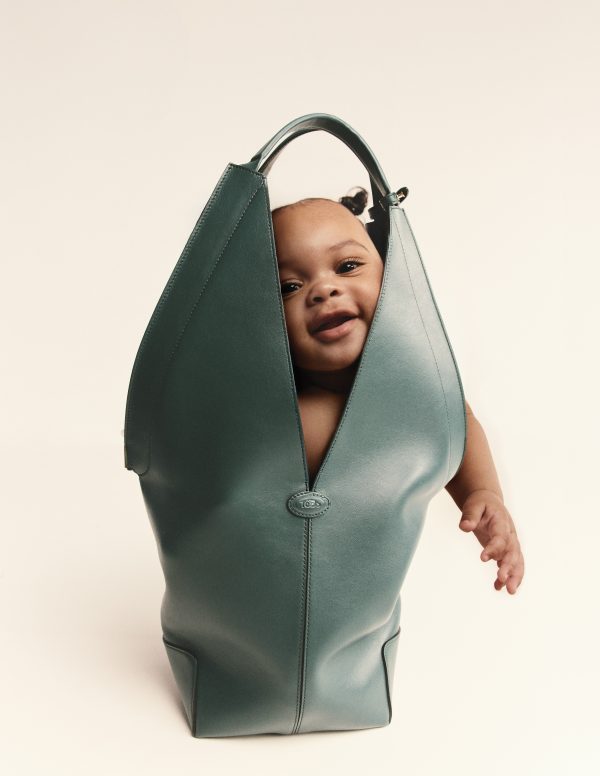Creating rigid pieces with a gentle touch, BING’s work tells a story of softness. Starting her journey as a pattern maker, BING since shifted her focus to her interpretation of soft sculpture, blending the influence of her father’s history as a wood sculptor with her own personal interest and history as an artist and fashion designer.
In honour of her family and her Chinese roots, BING presents her latest series of works — an exploration of hard and soft representing the duality of an imagined group of people she refers to as the “Ladies”. To do this, BING created a foundation of eight large pieces of horsehair canvas that she then layered and draped on models’ bodies. The textile supporting this is jersey, a soft fabric with considerable strength. BING elaborated on these themes in our exclusive interview.
What motivated you to move from just designing to starting your label, BING?
After graduating from FIT’s Master’s in Fine Arts program, I started off my career in fashion at a luxury brand’s apparel department. During my time of observing and learning there, I was fortunate enough to find my path and my target audience while exploring the connection between fashion and cultural and social perspectives, which I try to perceive and continue to voice through my own works. I was laid off at the outbreak of the pandemic, and during my ‘forced’ time home, I started my first personal collection using a unique combination of horsehair canvas and jersey fabrics to build comfortable yet structured Avant-Garde pieces for female figures who are soft yet powerful. I took great pride and self-fulfilment in the collection I built, and during the process, I took the time and settled down to decide what I really wanted out of my career as a designer. I want my own label; this way, I have my own voice. This is how BING was born, to be my own channel of thoughts.
You’ve said you design for “Ladies”. Who are the “ladies” you envision, and how does that influence your design?
I believe in people, and I design for a specific group of people. I call them “Ladies”, but it is not from a gender perspective. Ladies are the kind of people who believe in power behind softness. I’ve met so many ladies in my life — they are vulnerable, yet still powerful. They work hard, they support the family through ups and down, they are not typically labeled as a powerful person, they are the unsung heroes who have been consistently supportive and strong. This is a group of people I want to use each piece to portray and reflect both the softness and power of Ladies. This balance between youthful freedoms and adult ambitions, strong and gentle femininity are reflected in the unique combination and usage of specific textiles I select. As a brand, we are inspired by the Ladies, working with the Ladies and using aesthetically and functionally appealing designs for the Ladies. Part of the profits from BING goes to support Womankind NYC.
Let’s talk about the jersey and horsehair canvas specifically. Why were you inspired to use these materials as the basis for this collection?
In creating this collection, I selected jersey and horsehair canvas as the main textiles used. The softness and closeness to wearers that jersey creates are supported by horsehair canvas which brings structure, support, and function to the tailoring of the clothes, resonating with the theme of this collection; the softness of jersey can handle heavy-duty horsehair canvas, demonstrating the power of jersey, the power of softness.
You’ve said this collection is inspired by the woods. Why is that, and where do you see this in your collection?
My dad is a wood sculptor. Growing up with his artwork, his sculptures were basically all my toys in my childhood. Those sculptures were really big, hard, and delicate, unlike other kids’ fluffy and soft toys. My childhood doesn’t feel that way. It feels hard, heavy, and I think that experience influenced my personality, how I see things, and how I portray people in my life.
You say your work is influenced by sculpture. How does that thinking make your approach to design different from others in the industry?
During childhood, I witnessed my dad, a dexterous wood sculptor, building traditional Chinese fictional characters. Inspired by my dad, a sculptor in his local community, I was interested in the idea of interaction and interchangeability between 2D and 3D formats. As a fashion designer, I see my designs in the format of 3D sculpture, as the wearing of 2D clothing pieces serves as the most natural 2D-to-3D transformation process.
What role does family play in your history as a designer?
While the 3D sculpture idea behind this particular collection was due to my father’s influence, my mother influenced me most as a designer. My mom is a typical Chinese lady; she dedicated herself to our family and my dad’s career. In my memory, my mom would always smile and calm me down whenever I was upset or impatient. But behind the softness there has always been power — mom was the one who held the whole family together through ups and downs. When building this collection, I was honouring her — soft, yet powerful mom, and her power of softness.
What can you tell us about the future of BING?
BING does not have to appeal to the mass audience, as long as it is loyal to its niche of clientele. In the meantime, I want to keep optimising my process of production and operating behind BING — for it to become more accessible and friendly to our ‘ladies’, who deserve a lot of credit for what they are doing.
Make sure to follow BING on Instagram and check out the label’s website.
photography. Yuxuan Hu
fashion. Bingjin Zhu
model. Nyariang Chieng
make up. Mitch Yoshida













































































































